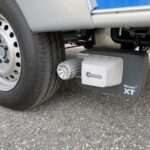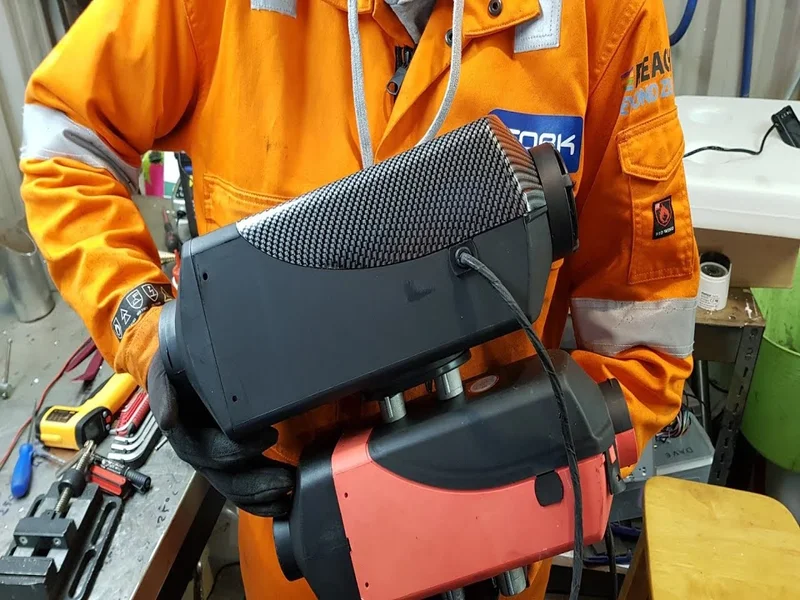Owning an RV opens up a world of freedom when it comes to travel, but there’s a lot of maintenance and upkeep necessary with these “homes on wheels”.
Most of that upkeep can be handled like any other vehicle – checking the oil, keeping the fluids topped up, making sure the tires all have air and the motor is running strong – but there’s a lot of other maintenance that is much more involved.
Especially when it comes to the sewer system of your RV.
Below we run through (almost) everything you need to know about your blackwater tank – including how long a 30 gallon tank will last you, when you need to flush the tanks, how to tackle this maintenance and more.
Let’s jump right in!
How Long Does A 30-Gallon Black Water Tank Last?
The majority of RVs on the road today have black water tanks that have between 25 and 30 gallons of capacity.
This is the real “sweet spot” – you won’t be dumping your waste all the time, but you won’t be carrying gallons and gallons of potential dangerous waste around everywhere you go, either.
As a general rule, a 30 gallon black water tank should give you about five or six days between pump outs.
This is just a ballpark figure, though. A couple of different things will influence just how long you’re able to run your RV before the tanks need to be flushed.
The amount of people using your RV bathroom is the biggest determining factor behind how soon your tanks need to be flushed. A solo operator might be able to get two or three weeks out of a 30 gallon tank before it needs to be cleaned.
A family and friends trip with seven or eight people travelling together, though, might only be able to get two or three days out of that same tank before it needs to get flushed.
As a general rule of thumb, though, you can expect to get about five or six days out of the black water tank before it needs to be flushed completely.
Black Water Tanks 101
Your RV has two separate tanks for holding water and waste from the internal plumbing system.
Grey water tanks are used for holding the water that comes from appliances and fixtures like the shower and the RV kitchen sink, for example. This is water that, while already used once for a specific purpose, can be reused once again for things like flushing the toilet.
Black water tanks, on the other hand, are a different animal altogether.
These are the tanks on your RV that hold all of the waste water (and other matter) from the toilet. This water is fully contaminated and can’t be treated, reused, or recycled by the RV systems.
You don’t want to be messing around with black water. That’s why it’s so important to be sure that you’re emptying your tanks properly (and on time).
How to Empty a Black Water Tank
Make Sure That Your Tank is Emptied Before It Gets Beyond 2/3 Full
For starters, you need to be 100% sure that you get your black water tank pumped out and emptied before it gets even close to completely full.
The waste water (and other material) that lands in this tank is going to be very volatile. It’s going to give off gasses, it’s going to get really rank and rancid – it’s going to be downright nasty, if we’re being totally honest.
If the tank gets too full of waste, though, all of the vapors and gasses this material gives off have nowhere to go. All of a sudden a bump or two in the road will have that gassed up pressure shooting black water and waste out of your plumbing fixtures and all over the interior of your RV.
That’s not something you ever want to deal with (especially if it happens while you’re driving down the road!).
Make sure you’re keeping an eye on your tanks. As soon as you get near 2/3 capacity it’s a good idea to flush ASAP.
Always Wear Gloves
Always – ALWAYS – wear gloves before you even start fooling around with your black water tank.
Seriously.
This is not something you want to risk. Black water is highly contaminated and even just a splash of contact can cause you a world of serious health issues. Don’t chance it – wear good, heavy rubber gloves specifically made for the purpose with “sleeves” that run right up your arms.
Use a High Quality Sewer Hose with Grey and Black Water Tanks
Secondly, you need to use only high quality sewer hoses when connecting for a flush.
The temptation is always going to be there to sort of cheap out. Don’t!
Saving a couple of pennies on a cheaper hose will cause a world of headache down the line.
It’s never fun ponying up a bunch of money for a hose you’ll only use for one specific purpose every couple days – a hose that’s going to be downright filthy after the first time you use it – but that’s the breaks.
Connect Only to Authorized Dump Stations
Start by connecting your hose to your RV first, then – and only then – connecting to authorized dump stations at RV parks or other facilities for black water.
Make sure you’ve hooked up to the right depository, too!
Most locations keep the grey and black water dumps relatively separate from one another for this exact reason. Just be safe and double check, that’s not a mistake you want to have happen.
Always Drain Black Water Tank First!
Make sure that you’re dumping out your black water tank before you dump the greywater one.
The black water will flow first, inevitably leaving behind a layer of sludge and sediment. The grey water gate allows that water to flow through the black water system, rinsing everything out and giving it a deeper clean.
Reverse the process and all that sludge gets left behind. Make sure the black water goes first and then the grey water and you’ll be good to go!
Disconnect from the RV First, Then the Dump Connection
Now all you have to do is disconnect from the RV first and then the dump connection.
This reverses the process for starting things rolling, but it guarantees that little bits of black and grey water (and other material) aren’t going to come flowing back into your tanks once they’ve been cleaned.
Empty, Clean, and Disinfect Tanks Every Time You Service Them
Now you’ll want to add tank cleaner and disinfectant to the tanks.
There are a lot of high quality products specifically for black water systems worth using. A little bit of research will land you something that works well without breaking your bank account.
Consider Professional Deep Cleans Once or Twice a Year
Finally, it’s not a bad idea to have your RV black and grey water systems flushed and deep cleaned professional once or twice a year.
Sure, hitting the tanks with a pressurized hose every now and again will do a decent job of keeping things clean and running smooth. But eventually, some sludge and grime is going to cake into the system and removing it is a nightmare.
It’s the kind of thing best left to the professionals.
On top of that, these annual or every six month cleanings can also guarantee your tanks get a professional inspection. These experts will be able to spot trouble issues before they become nightmares and help make sure your whole RV plumbing system is working as best it can.
Best of all, these kinds of services won’t break your bank account if you’re doing them every 6 to 12 months!








